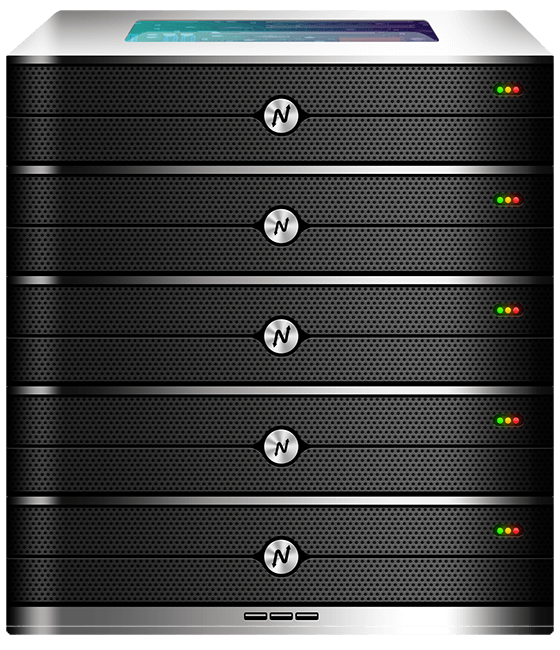If you are evaluating how to host VDS for your website or application, this guide walks you through the essentials in clear, practical language. Virtual Dedicated Servers (VDS) combine the isolation of dedicated hardware with the flexibility of virtualization, making them a popular choice for developers, agencies, and growing businesses. Choosing where to host VDS matters globally because infrastructure location, network peering, and support directly affect speed, reliability, and cost. India’s matured data centers deliver strong value: lower operating costs, low latency across Asia, global peering, robust security controls, and smooth scalability for international workloads. In this article you will learn how to host VDS smartly, compare Indian servers with other regions, examine real use cases, and pick the best XenaxCloud plans for your needs.
- 4 GB RAM
- 40 GB SSD Storage
- 2 TB Bandwidth
- 1 IPV4 & IPV6
What is a VDS and why host VDS instead of shared hosting or bare metal?
A Virtual Dedicated Server, or VDS, is a virtual machine allocated with dedicated CPU, RAM, and disk resources on a physical host. Unlike shared hosting, where resources are pooled and noisy neighbors can affect performance, a VDS gives you predictable performance and control over the operating system and installed software.
You might choose to host VDS when you need better performance than shared plans, but you do not require the full expense or management of a dedicated server. VDS is also useful when you want root access for custom stacks, container orchestration, or database tuning. Compared to bare metal, VDS offers faster provisioning and easier snapshot-based backups. For many teams the sweet spot is to host VDS for production apps and keep development or static sites on cheaper shared or mini hosting tiers.
How to choose the right way to host VDS
Choosing how and where to host VDS starts with a few concrete questions: what is your traffic profile, how much predictable CPU and RAM do you need, and where are your users located?
- Define resource needs. For small apps a 2 Vcore, 8GB RAM instance is often enough. For database-heavy or eCommerce workloads, start with 4 Vcore and 16GB RAM. XenaxCloud’s KVM VPS 1 — 2 Vcore CPU, 8GB RAM, 40GB Storage, 2TB Bandwidth, $5.99 and KVM VPS 2 — 4 Vcore CPU, 16GB RAM, 50GB Storage, 4TB Bandwidth, $10.79 are practical baselines.
- Decide on storage and I/O. Use SSD or NVMe-backed VDS for databases and high I/O workloads. Disk performance directly affects page response time under load.
- Choose network and location. Host VDS closer to your audience to reduce latency, or use CDN for static assets when serving global users.
- Plan for backups and snapshots. A VDS that supports quick snapshots and automated backup retention reduces recovery time after failures.
- Check support and provisioning. Fast provisioning and 24/7 support are essential when you need to scale or troubleshoot in production.
If you want a simple path, start with the XenaxCloud VPS page here: https://xenaxcloud.com/vps-server/. That internal link connects you to detailed specs and provisioning options to host VDS quickly.

Host VDS: speed, uptime, and security considerations
When you decide to host VDS, speed, uptime, and security are the three most impactful areas.
Speed. A VDS’s speed depends on CPU performance, RAM, and disk I/O. Use caching layers such as Redis or Memcached for dynamic pages and configure web server optimizations like PHP-FPM tuning. Also enable HTTP/2 or HTTP/3 and a CDN for global reach.
Uptime. Look for providers with redundant networking, power, and automated failover. A VDS that sits on a platform offering 99.99% uptime with multi-homing reduces risk during traffic spikes. Monitoring and alerting for resource exhaustion prevent incidents from escalating.
Security. Secure your VDS with regular OS patching, a host-level firewall, and intrusion detection. Use key-based SSH authentication, disable root login, and enforce strong password policies. For sensitive workloads, combine VDS hosting with managed backups and DDoS mitigation.
Example: a WooCommerce store hosted on a KVM VPS 2 can reserve memory for MySQL, set PHP workers appropriately, and use an edge CDN. These changes keep checkout latency low during sales events.
Comparison: Indian servers vs US, Canada, Germany, UAE for hosting VDS
Choosing where to host VDS has performance and operational consequences. The table below compares key variables relevant to hosting VDS: latency to Asia, support availability, provisioning speed, and redundancy.
| Region | Typical Latency to Asia | Support Availability | Provisioning Speed | Redundancy & Uptime |
|---|---|---|---|---|
| India | 20–50ms | 24/7 local & global | Fast (minutes to hours) | Tier III/IV, high reliability |
| United States | 150–220ms | 24/7 but time-zone biased | Fast (hours) | Enterprise-grade, high |
| Canada | 160–230ms | Business hours & global | Moderate | High |
| Germany | 140–200ms | Business hours & global | Moderate | High |
| UAE | 70–120ms | Regional support | Moderate | Improving |
Why this matters: hosting VDS in India often reduces latency for Asian users, keeps operational costs lower, and still supports global reach via CDN and global peering. For North American or European primary audiences, consider hosting VDS closer to those regions or using a hybrid approach.
Real-world use cases: when to host VDS
Host VDS if your application needs isolation, performance and customization that shared hosting cannot deliver. Practical examples:
E-commerce stores. You need predictable database performance and control over caching. Start on KVM VPS 2 and vertically scale as transaction volume grows.
SaaS platforms. Multi-tenant apps require consistent CPU and memory allocation. VDS lets you allocate resources and tune kernels or container runtimes.
Developer environments and CI/CD runners. VDS is cost-effective for reproducible build servers and staging environments that mirror production.
High-traffic WordPress with heavy plugins. Managed WordPress hosting is convenient, but when plugins or custom code create resource needs, host VDS to control PHP-FPM, caching, and database tuning.
Resellers and agencies. Host VDS as client-dedicated environments while keeping central monitoring and backups.
Each use case shows how and why teams choose to host VDS instead of cheaper shared plans.
Scalability: vertical and horizontal strategies when you host VDS
Scalability for VDS comes in two forms: vertical scaling (more CPU, RAM, disk) and horizontal scaling (multiple instances with a load balancer).
Vertical scaling is straightforward for VDS: upgrade the instance plan to add vCores or RAM. For example, move from KVM VPS 1 to KVM VPS 2 if database load increases. This keeps architecture simple.
Horizontal scaling is ideal for stateless web frontends. Deploy multiple VDS instances behind a load balancer, push static content to a CDN, and use a managed database or replicated database cluster. Horizontal scaling reduces single-instance failures and makes capacity more elastic.
Hybrid approach: keep stateful components like databases on a stronger single VDS or managed DB, while scaling web tiers horizontally. This combination often provides the best cost-performance balance.
Migration tip: when you host VDS with a provider that offers snapshots and fast provisioning, you can clone instances and add capacity in minutes.
Cost and plan recommendations to host VDS with XenaxCloud
When you decide to host VDS, align the plan with expected load and growth path. Recommended starting points:
- Development and small production: KVM VPS 1 — 2 Vcore CPU, 8GB RAM, 40GB Storage, 2TB Bandwidth, $5.99. Good for test environments or low-traffic production sites.
- Production eCommerce and SaaS: KVM VPS 2 — 4 Vcore CPU, 16GB RAM, 50GB Storage, 4TB Bandwidth, $10.79. This offers a balanced CPU-to-memory ratio for caching and DB performance.
- High concurrency or multi-tenant workloads: upgrade within Speed KVM VPS or Gold KVM VPS families for more cores and bandwidth.
- Agencies and resellers wanting multiple VDS instances: start with a mix of Shared Hosting Gold for small clients and KVM VPS 2 for larger accounts.
Also consider Speed KVM VPS tiers for workloads that need low-latency I/O, and Gold KVM VPS for higher reliability and throughput. Whatever you choose, include automated backups and monitoring as part of the hosting package.
Best practices: operational checklist when you host VDS
- Harden the OS: keep packages updated and remove unnecessary services.
- Use key-based SSH and disable password-based root logins.
- Configure a host-level firewall and limit open ports.
- Automate backups and test restores regularly.
- Monitor CPU, memory, disk I/O, and network usage.
- Use CDN for global static assets and consider geo-routing for latency-critical apps.
- Maintain a staging environment to test OS and application changes.
Following these steps helps you get predictable performance and avoid surprises after you host VDS for production traffic.
FAQs —
What is the difference between Indian VPS and foreign VPS?
Indian VPS offers lower latency for Asian users and often more affordable bandwidth for regional traffic, while foreign VPS may be closer to North American or European audiences.
Can Indian servers handle global website traffic?
Yes, when combined with CDNs, multi-homed peering, and proper scaling, Indian servers can serve international traffic efficiently.
Is Indian hosting cost-effective for international users?
Often yes; Indian hosting can provide strong price-to-performance ratios, especially for apps with APAC focus.
How to choose the right server for my business?
Assess your traffic, application type, and growth; start with the appropriate KVM VPS plan and scale vertically or horizontally as needed.
How reliable is XenaxCloud hosting?
XenaxCloud runs on Tier III/IV infrastructure, offers 24/7 support, and maintains strong redundancy and backup practices.
Conclusion — Host VDS with confidence
Deciding where and how to host VDS is a strategic choice that affects performance, cost, and growth. Hosting VDS in India is a smart option for many global projects because it combines cost-effectiveness, low latency across Asia, strong security and compliance practices, and scalable infrastructure. For most production workloads the recommended XenaxCloud starting points are KVM VPS 1 — 2 Vcore CPU, 8GB RAM, 40GB Storage, 2TB Bandwidth, $5.99 for smaller projects, and KVM VPS 2 — 4 Vcore CPU, 16GB RAM, 50GB Storage, 4TB Bandwidth, $10.79 for production eCommerce and SaaS platforms. XenaxCloud also offers fast provisioning, managed options, and a 15-day money-back guarantee so you can evaluate performance risk-free. To see current plans, provisioning options, and the latest deals, visit the XenaxCloud VPS page and Offers Page and start to host VDS with a provider geared for global performance: https://xenaxcloud.com/vps-server/ and https://xenaxcloud.com/offers
Ready to host VDS that scales with your business? Choose XenaxCloud and provision a VDS in minutes.





